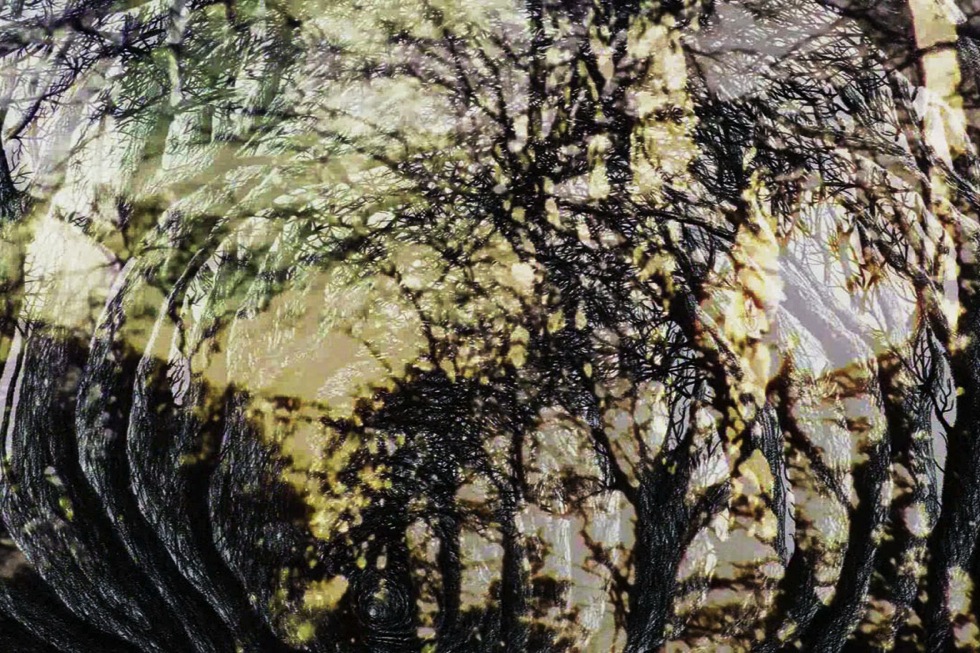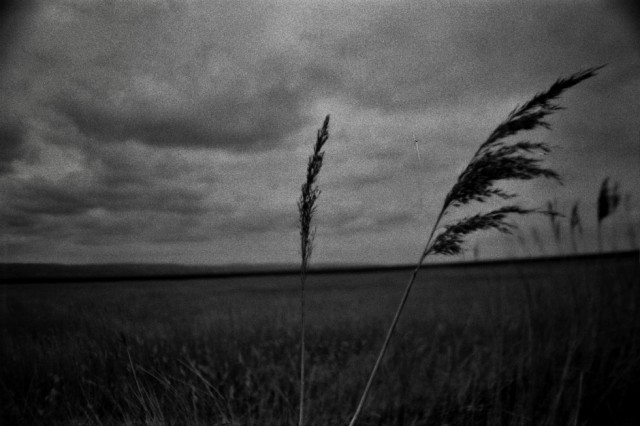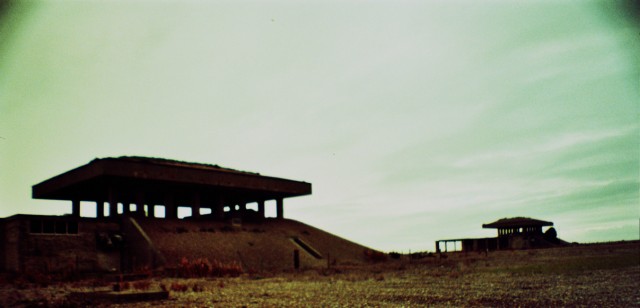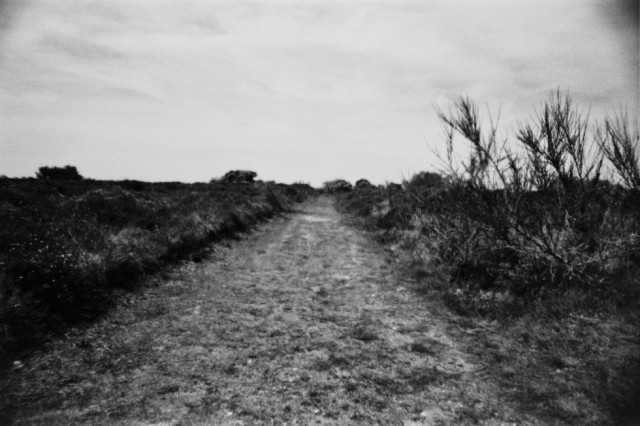“The underground holds secrets that we’re only beginning to guess at” — The Big Interview: Robert Macfarlane

Adam Scovell discusses English Eerie and Folk Horror fiction, the “messiness of modern nature”, and subterranean worlds with collaborator, academic and bestselling author, Robert Macfarlane…
Robert Macfarlane has been one of a number of key figures at the forefront of the millennium’s return to interest in landscape within the arts. From numerous books, collaborative multimedia projects and essays, including the Samuel Johnson Prize-nominated The Old Ways (2012) and Landmarks (2015), Macfarlane began a vast cultural, aesthetic and political reassessment of our relationship with the world around us, especially within literature, that he is still continuing to explore today.
There is a continual process and essence of rediscovery within Macfarlane’s work, most commonly (though not uniquely) of older works of landscape literature now commonly known under the term of Nature Writing, and he has arguably played a large part in the rise of interest in work by the likes of Nan Shepherd, Edward Thomas and J. A. Baker. With recent work in more multimedia-based forms, including collaborations and work with Stanley Donwood, Frank Turner and Johnny Flynn, I spoke to Macfarlane about all things landscape, the reasoning behind the resurgence in such work and the darker context in which it is both situated and a reaction to.
The Double Negative: The first thing to ask about is the resurgence of emphasis upon landscape in a whole range of the arts, but literature is probably the best place to start. What in particular do you attribute to the general rise in what people are calling nature writing, but also landscape in other media as well?
Robert Macfarlane: I was in Germany recently and someone said: “Geo-poetry” — pronounced with a hard G — “it’s all about forms of geo-poetry”. And I quite like this idea of a “geo-poetic” turn in contemporary culture. Certainly, whatever is happening, we need a term for it that’s much more capacious and stranger than nature writing, not least because, as you imply, this landscape turn is happening across media, and is often collaborative in its nature and multi-media in its textures, and because “nature” is an idea it seeks to put under pressure. But yes, whatever we call it, something’s happened over the past 15 years or so, in Britain and Ireland and beyond, and shows no sign of not intensifying further. It’s been exciting to be part of it.
So, why has it happened? There’s a dozen genealogies I can suggest but I guess one clear context is the “Anthropocene“ as we are increasingly calling the contemporary epoch. Planetary-scale environmental crisis and damage, combined with a keen sense of loss and peril, and with questions of complicity and culpability complicatedly folded in, have been one reason for the re-politicisation of the broad field of “landscape” and gave it a dynamism and an urgency that had perhaps been drained to some degree. 2016 is the year, in fact, as you know, when the Anthropocene Working Party of the ISC will recommend whether or not the Anthropocene should be adopted as a formal new epoch of the Earth. At such a moment, it seems to me that we are — or should be — spirallingly conscious of the complexity and messiness of modern nature, and the complicity of our involvement with the Earth. This seems to have unsettled, in all sorts of ways, old thinking about landscape. And out of that unsettlement has arisen many of these “new-old” forms of cultural work.
A: So, with “new-old” work, do you think this recent emphasis on landscape augmentation is allowing us to read older work in a new light? Obviously with the “English Eerie” we can think of M. R. James, but also of older post-apocalyptic work, like Richard Jeffries’ After London and J.G. Ballard’s The Drowned World. Do you think that works such as those are becoming again more popular because of this?
R: That’s a good way of thinking about it; of two broad responses happening concurrently. First, there’s a whole new body of work emerging across media and multimedia, the Holloway film that you and I made with Stanley Donwood and Richard Skelton being just one example of that. These new projects are often collaborative in form, which is in keeping with a sense of what we might call — after Latour and Deleuze — assemblage-thinking; which is to say about the ways ecologies are formed, not hierarchically, not with single humans or makers at their summit, but in which we are networked with all sorts of other agents that might not have previously been thought of as agents; stone, creatures, atmospheres and so forth.

But secondly, as you suggest, there’s absolutely a cultural return-of-the-repressed, whereby older works suddenly are gaining new, sharp traction upon us. M.R. James’s fiction is full of revenants, as we know, and that is also an emblem of the status of his work; it can never quite be settled or put away — it keeps coming back to us in new guises, whispering new messages. That’s happening with Jeffries, yes, and with J. A. Baker’s The Peregrine, about which I’ve written and spoken about a lot over the years. The Peregrine, astonishingly, turns 50 next year and yet its relevance seems keener than ever; in terms of its preoccupations with pesticide overuse, with species shame, with legacy, with death from the air. It feels like it was written yesterday — or rather, it feels like it was written tomorrow.
So there’s this double energy emerging. New works being created and old works returning to us with new powers. I mean, you’re deeply involved in that yourself — in re-reading traditions of Folk Horror, of blood pastoral, and seeing the talon-grip that such forms have upon the imagination still. Periods of history in particular like the Civil War and the Enclosures are further examples of this; the return of radical episodes in the English past just keep coming back at us, nagging us to consider them again.
A: That’s recognisable in cinema to me as it seems, in the last five years especially, Kevin Brownlow’s and Andrew Mollo’s Winstanley (1975) (about Gerrard Winstanley and the Diggers movement) has come hugely into focus again, not just as a masterpiece of British film, but as a masterpiece of radical landscape politics in a medium that, at least until that period, had shied away from it.
R: Exactly, that’s an excellent example. It is unsurprising to me that in a period of (especially English) politics in which the privatisation of land, both urban and rural, and its allocation into fewer and fewer hands, by means of shadowy shell-companies and ruthless offshoring, is proceeding at a staggering pace, we should be looking back to episodes of history in which dissent with structures of land-ownership took fierce form.
As Joe Kennedy put in a superb 2013 essay, there’s a timeliness at work: “It seems that now, more than at any time in living memory, what lies beyond the city is up for grabs, in a cultural and political conflict with increasingly high stakes. To insist on the historical complexity of the rural, by highlighting the often grim activities which occur beneath the sightlines afforded by postcards, is to query its tidying up into a set of easily consumable images and, lest we forget, tastes.”

A: Moving on from that, how do you think technology plays a roles in this? For the first question, the initial aspect that sprung to mind for me was Tacita Dean speaking in Grant Gee’s 2012 film about W. G. Sebald (Patience (After Sebald)), where one of the reasons walking in particular, and landscapes, has become more popular again is because of an effect of mediation through modern digital and social technology. I wondered what your thoughts were on technology’s role in the resurgence of getting out, or perhaps going in again?
R: My first response is that the antagonist here is not necessarily “mediation” as much as “bureaucratisation”. By which I mean that what might be being got-around, as it were, by this turn back to walking and other forms of contact, is the extreme management of expectations by means of economic and materialist contexts: a disenchanted landscape, subdued by cultural simplification and economic conversion. Back to Kennedy’s call for an insistence on the “historical complexity of the rural”. To pry out complexity requires patience, improvisation, and forms of return. For this reason, it seems to me, so many contemporary landscape practitioners will often haunt a particular place and return to it again and again (like the poet Rod Mengham on Dartmoor’s Grimspound, say), trying to take it by surprise or be taken surprised by it. So what’s being got-around isn’t so much technology, but simplification or premeditation, and the interposition of interpretation.
A: This reminds of how certain points surrounding the English Eerie chime in your work and how certain popular examples have required sites like YouTube to be the initiators in their cultural revival. It’s probably a good point to ask about the term itself. I first came across it when we first started talking a while back about Algernon Blackwood, but where did this term actually thematically germinate?
R: Well a lot of my thinking in this area, about an anti-tradition or a necessary skew to the picturesque and to the pastoral, is articulated in two essays published recently in the Tate and the Guardian. Certainly, I don’t claim a patent on the term English Eerie, though I guess I’ve become somewhat associated with it. But a lot of people have been thinking and working around these questions of unsettlement and dis-ease, if you like, for years. Joe Kennedy and Nick Groom, to mention only two, have written brilliantly on this area.
I guess, yes, I wanted to find a term that might account for the complex counter tradition that has existed almost as a sub-surface rhizome to the much more visible flowerings of the pastoral as a cultural tradition, especially in a British context and even more particularly in an English context. The pastoral is what we’re weaned on, in terms of the image-repertoire of common culture, from the Haywain to Cameron’s “Green Toryism”.

I’m increasingly more interested in its disputatious dark twin, of the eerie, or whatever you will, the preoccupations of which are exile, indeterminacy and ownership, rather than dwelling, belonging and consolation. If you look at a film like Patrick Keiller’s Robinson In Ruins [2010] for instance, it’s explicitly a film not about belonging to a landscape, but about the questions of to whom that landscape belongs.
A: I think that’s the best recent cinematic example that I could think of along those lines. I think it’s the stasis in his films that creates that sort of questioning. It’s such a political stasis and that’s refreshing as a lot of modern British film is very energetic, in exciting ways of course, but all of a sudden you’ll see a Keiller film, whether it’s London or the other Robinson films, and that stasis just hits you, the silence of its landscapes is powerfully overwhelming.
R: And those long holds, well I mean the whole film is run through fixed-frame shots. You’ll get a long hold over an above-ground gas pipeline marker, and the voice-over will slowly tell you that the gas that’s passing through the invisible pipeline — we’re back with the subterranean rhizome again [laughs] — is 30% owned by a Canadian investment company and that company itself represents the pension holdings of secondary school teachers in the province of Ontario. Keiller flenses out this amazing vision of a dispersed ownership structure that controls this invisible underground network of buried, owned resource. So it seems to me to make perfect sense that the eerie, which is about not-knowings, not-ownings, not-seeings, and a kind of troubled dissent, should be making a minor comeback right now.
A: I suppose, as you’ve mentioned a number of subterranean elements, the final project to ask about is the current work undertaken on your Underland book.
R: As you can hear, my entire cortex is structured in terms of subterranean metaphors at the moment [laughs]. I’ve just been working and walking with a mycorrhizal fungal specialist who works on the invisible, subterranean networks and third-party connections that exist in forests, whereby fungal networks join the root systems of trees, to create a mesh of interspecies mutualities that is colloquially known as the “wood-wide web” or the myco-net; and here we are back again with technology. By means of the myco-net system, trees share resources, they share vulnerability, they trade carbon in the form of glucose with the fungi and they even seem to send electrical pulses along it. Mindblowing!
This whole research field — below-ground ecology as it’s known — is completely rethinking the nature of community in the contexts of woodland and forest, and, by means of that, is beginning to ask vast questions about long-held ideas of species, of community, of ecology, of relation as a concept. It’s just another example, to me, of how the underground holds secrets that we’re only beginning to guess at because we’re only beginning to discover the technologies that will render them visible to us. So yes, I’m deep into a huge seven-year book on invisibility, knowledge, burial and seeing-in-the-dark.
Adam Scovell
See Robert Macfarlane respond to the Francis Bacon: Invisible Rooms exhibition in a special LJMU’s Writers’ Workshop at Tate Liverpool, 7.30-9pm, 16 June 2016 — £12/ Concessions £10 (price includes a complementary glass of wine)
Read more about Adam and Robert’s film Holloway here
Read Bacon, Lassnig & Kruglyanskaya: Tate Liverpool’s Summer Season — Reviewed
Further reading: The Eeriness of the English Countryside, the Guardian
Images: 35mm photography by Adam Scovell, from his past, present and future (ongoing) English Eerie projects





